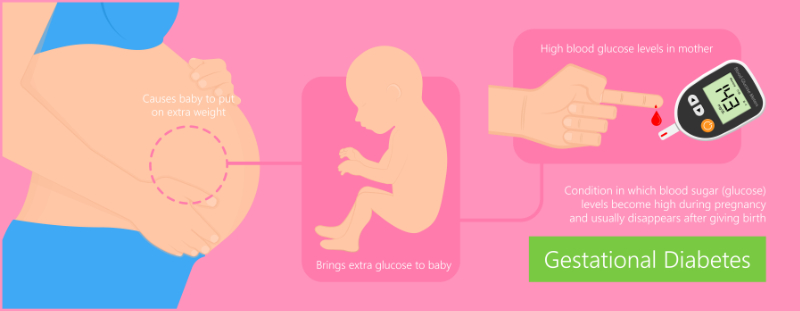All pregnant women should undergo a glucose tolerance test, or GTT (Nakshine & Jogdand, 2023). It often is called an oral glucose tolerance test (OGTT) as well. This test evaluates the body’s response to sugar. It may be done as early as the first prenatal visit if there is a high risk of having diabetes. If early screening is not done or if the screening is negative, a pregnant woman should be screened after 24 weeks gestation, generally between 24 and 28 weeks of pregnancy (US Preventive Services Task Force, 2021).
There are two different ways to test for gestational diabetes. The one-step approach is when the patient is given a 75-gram dose of glucose, then her blood glucose level is tested 2 hours later. The woman also must be fasting.
The two-step approach is most often used. The woman does not have to be fasting. She gets a 50-gram dose of glucose and has her glucose tested 1 hour later. If her blood sugar is abnormal, she will need a second test. The second test is a 3-hour glucose tolerance test. In a 3-hour GTT, the woman fasts for at least eight hours, has a fasting blood sugar drawn in the morning, then takes a 100-gram dose of glucose and then has her blood sugar drawn every hour for 3 hours. Two or more abnormal results would meet the diagnostic requirements for the woman to be diagnosed with gestational diabetes.
The following chart includes the diagnostic criteria for the 3-hour 100-gram oral glucose tolerance test for gestational diabetes mellitus (Durnwald, 2024a; Mayo Clinic, 2024):
Diagnostic Criteria for 3-hour 100-gram Oral Glucose Tolerance Test (OGTT)| Fasting Blood Glucose | 95 mg/dL |
|---|
| 1-hour Blood Glucose | 180 mg/dL |
|---|
| 2-hour Blood Glucose | 155 mg/dL |
|---|
| 3-hour Blood Glucose | 140 mg/dL |
|---|
As briefly mentioned above, a positive test is generally defined as at least two or more glucose values that are at or above these diagnostic levels in this table above (Durnwald, 2024a; Mayo Clinic, 2024). In other words, the woman would then meet diagnostic criteria to be diagnosed with gestational diabetes mellitus (Durnwald, 2024a; Mayo Clinic, 2024). These levels may vary slightly depending on the clinic or laboratory that is collecting the samples and their respective reference ranges (Mayo Clinic, 2024).
It is important to also note that glycated hemoglobin A1C (HbA1C) is not a good indicator when diagnosing gestational diabetes. It may be used in early pregnancy, however, to determine if the woman has pre-existing diabetes (ACOG, 2018a).








